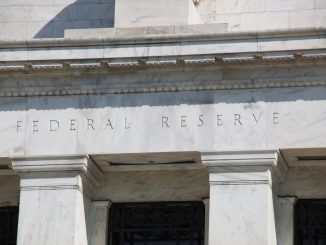I rarely use the term ‘risk’ in my macro posts. It would barely show up in any word cloud. I rarely use the term ‘power’ in my micro posts. Those are my blind spots. Today I’m going against conventional wisdom by arguing that the Fed’s ultra-tight monetary policy has dramatically increased risk in three areas: policy fragility, balance sheet risk, and financial system fragility.
Who says Fed policy is ultra-tight? Actually, Ben Bernanke said so in 2003, when he argued that the money supply and interest rates were misleading, and that the “only” way to determine the stance of monetary policy is by looking at NGDP growth and inflation. If you average those two variables, the past 46 months have been the tightest money since Herbert Hoover was President. NGDP growth has averaged only 1.9%/year, inflation only 1.1%.
And what are the consequences of this policy?
1. It’s obviously made the financial crisis much worse, as an unexpected slowdown in nominal income growth almost inevitably makes it harder to repay loans. After all, income represents the resources that people, businesses and governments have to repay nominal debts. Less nominal income leads to more defaults. This is currently an even bigger problem is Europe.
2. Less obvious is the fact that the ultra-tight monetary policy has lead to a much bigger Fed balance sheet. If you look around the world you’ll see that countries with lower NGDP growth rates have lower nominal interest rates and much bigger monetary bases (as a share of GDP.)
Here is the data for the past 5 years, for three major economies:
Country NGDP growth 5 year Gov bond yield Base/GDP in 2011
Australia 41.3% 3.69% 4.0%
America 12.8% 0.90% 17.9%
Japan -8.3% 0.31% 23.8%
(I took this from an old blog post, so the data’s slightly out of date.)
I actually worry less about this risk than the other two, as the Fed holds mostly T-securities and any losses it suffers are gains to the Treasury. And the EMH says the expected gains or losses are roughly zero. And it’s currently making vastly larger than normal profits. But others who worry about this issue should favor much faster NGDP growth so we could shrink down closer to the RBA’s balance sheet (actually 6% of GDP is the “normal” level for the US.)
3. The third big problem is policy risk. When rates are above normal the Fed is able to use its preferred policy instrument (the fed funds target) combined with the Taylor Rule to deliver stable NGDP growth. But ever since we’ve moved to the ultra-low tight money policy, interest rates have fallen to the zero rate bound. There are other tools that would work, but the Fed isn’t comfortable using them. This makes it less likely that they will hit their macro policy objectives. This isn’t to say they’d stopped doing policy, they still try things like QE and interest rate guidance, rather it means they’ve introduced more macroeconomic risk. That’s why volatility in the equity markets increased in the period after 2007, just as stock market volatility more than doubled in the 1930s.
The Fed has adopted an extremely reckless and risky policy. But here’s the great irony; 99% of economists think that solving the problem, going back to faster NGDP growth, would be a risky decision for the Fed. “Oh dear . . . they might have to buy so much stuff.” It’s all about fear of the unknown. I’m here to tell you that 5% NGDP growth is the known. What we have today is the unknown. This applies doubly to Europe. Remember those who said the euro would bring ‘stability,” that it would eliminate the instability of exchange rate fluctuations? The Economist has a wonderful metaphor in their new issue:
Speaking recently in Brussels, the IMF’s Nemat Shafik compared such a process of internal devaluation to painting a house. “If you have an exchange rate you can move your brush back and forth. If you don’t have an exchange rate you have to move the whole house.”
The Europeans have picked up the whole country of Greece and are shaking it back and forth. The result is an economic/social/political earthquake. The real risk is not doing too much with monetary policy, it’s doing too little.
BTW. Nick Rowe has a great new post–probably my favorite blog post of the year. I’m sure that some of my future posts will be triggered by thinking about the implications of Nick’s metaphors.




Leave a Reply